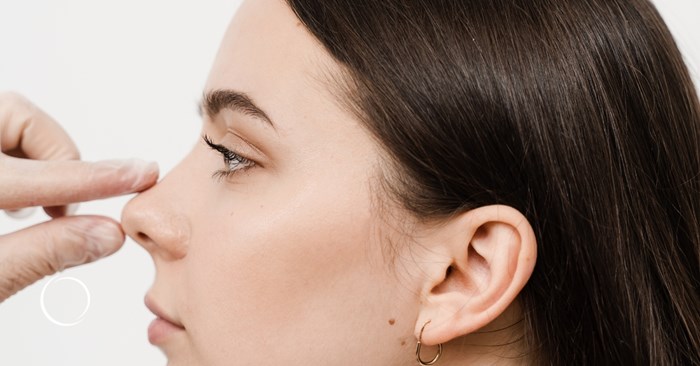Rhinoplasty vs septoplasty: Plastic surgery procedures for the nose

There is no denying that your nose plays a central role in your appearance. It's often the most prominent facial feature for both men and women, and because it plays such a key role in our appearance, we often tend to see irregularities in both form and function with our nose more frequently than other aspects of our face.
For those who are concerned with the aesthetic appearance of their nose, the ever-popular rhinoplasty may be something you consider. However, if there is an issue with the structure and function of the nose, rhinoplasty may not be the right surgical option. In fact, this situation is often better served by the lesser-known cousin – septoplasty.
Generally, a rhinoplasty addresses the outside appearance of the nose, but a septoplasty targets the anatomy inside the nose to make breathing better. It focuses on correcting the septum, the thin wall in your nose that separates your nostrils. These two procedures can also be combined to correct both the form and function of the nose.
How do rhinoplasty and septoplasty differ? Are there any scenarios in which both should be performed together? How can patients determine which procedure is the correct option to address their concerns?
To answer these questions and gather more insight into the topic of nose-related plastic surgery procedures, we reached out to ASPS Member Surgeon Omar Hussain, MD, FACS, a double-board certified plastic surgeon who specializes in facial aesthetics in Beverly Hills.
ASPS: When considering popular facial aesthetic procedures, one that is always a favorite is rhinoplasty. However, while many patients are acquainted with this procedure, fewer are as familiar with septoplasty. Is one procedure more popular than the other at your practice?
Dr. Hussain: Rhinoplasty is more popular at my practice, but septoplasty is a very close second. Many patients come in for a rhinoplasty, not knowing that a septoplasty is required to achieve their goals.
ASPS: How would you describe the key differences between these two types of procedures? Key similarities?
Dr. Hussain: Rhinoplasty addresses the external appearance of the nose or its function. Septoplasty targets the cartilaginous midline structure that partitions the airway but can also obstruct it if it's deformed. These procedures can overlap when the external appearance is affected by a crooked septum.
A traumatic injury to the nose often affects both the external structures of the nose as well as causing septal deviation.
ASPS: Who are the patients who typically approach you for a rhinoplasty?
Dr. Hussain: There are two age groups of patients who I see for a rhinoplasty. Younger patients in their late teens and early 20s who get aesthetic rhinoplasties to correct things that have always bothered them about the appearance of their nose and have a natural transition out of high school to college or college to work. The second age group is people in their 30s to 40s who have either always wanted it and can finally afford it or need a revision on one from their late teens that hasn't aged well.
ASPS: Who are the patients that typically approach you for a septoplasty?
Dr. Hussain: Septoplasty patients often experience nasal obstruction, and it affects any age, especially if caused by trauma.
ASPS: How often is there a crossover between these two procedures?
Dr. Hussain: It's extremely common for these to overlap in my practice.
ASPS: Do you have any advice for patients who are considering a rhinoplasty, septoplasty or both?
Dr. Hussain: If you have difficulty breathing due to a deviated septum, don't postpone the surgery. Know that it is a functional breathing issue that is covered by insurance. Patients wake up breathing better than they ever have in their lives and only regret not doing it sooner.
My advice to rhinoplasty patients is to try to preserve as much of your natural nose as possible while correcting the areas that need to be improved and seek out board-certified plastic surgeons who do a high volume of rhinoplasties and stay up to date with new techniques and literature.
ASPS: Do you have any additional insights around this topic that you'd like to share?
Dr. Hussain: The septum plays a large role in rhinoplasty surgery and often needs to be part of the overall solution by being corrected or harvested for grafts. Its impact on the airway can't be overstated, and its strength and structure heavily influence the overlying shape.
To find a qualified plastic surgeon for any cosmetic or reconstructive procedure, consult a member of the American Society of Plastic Surgeons. All ASPS members are board certified by the American Board of Plastic Surgery, have completed an accredited plastic surgery training program, practice in accredited facilities and follow strict standards of safety and ethics. Find an ASPS member in your area.
